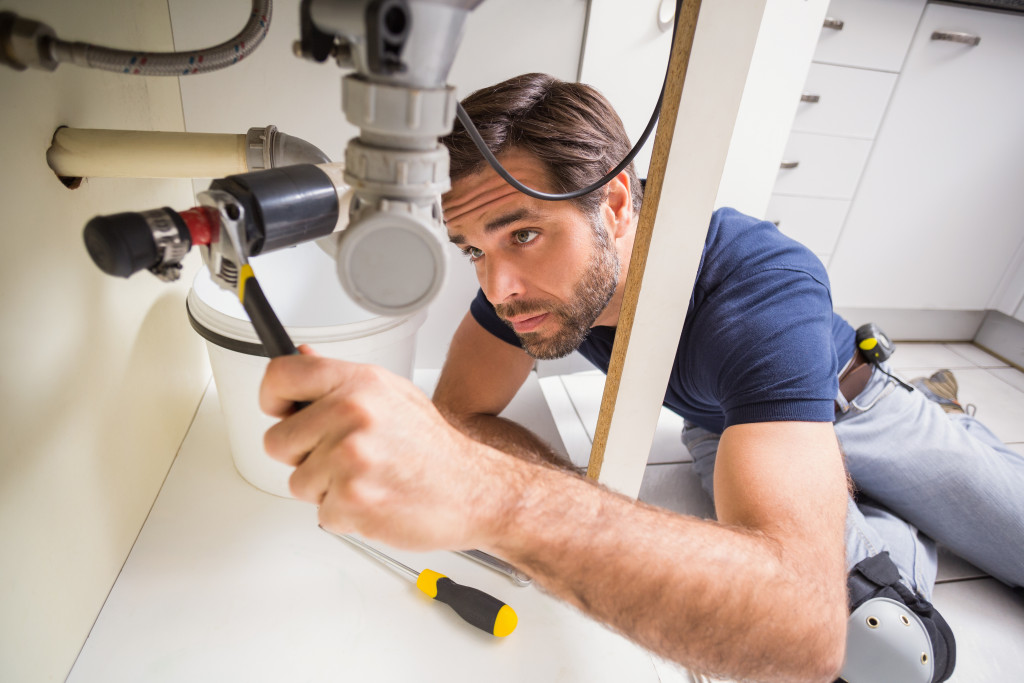As a homeowner, there’s nothing worse than dealing with a plumbing problem. Not only are they a pain to deal with, but they can also be quite pricey to fix. That’s why it’s always a good idea to be aware of the most common home plumbing problems so that you can know what to look for and how to fix them if and when they occur.
Clogged Drains
Homeowners regularly deal with clogged drains. Over time, drains can become clogged with various debris. If you notice that your drains are draining more slowly than usual or that water is starting to back up into your sink or shower, you likely have a clog.
Fortunately, there are a few things you can do to fix a clogged drain. The first is to try using a plunger. If that doesn’t work, you can try using a drain snake or an auger. You may also try a chemical drain cleaner, although these should be used as a last resort as they can damage your pipes. If those don’t work either, then you may need to call in a professional plumber to take care of the problem for you.
Malfunctioning Water Heaters
Malfunctioning water heaters are one of the most common plumbing problems. Water heaters typically last for about 10-15 years, so if yours is starting to act up, it may be time for a replacement. Some signs that your water heater needs to be replaced include strange noises coming from the unit, water that isn’t as hot as it used to be, or water that takes a long time to heat up.
If your water heater is starting to act up, you can first try checking the thermostat to see if it needs to be adjusted. If that doesn’t work, the best thing you can do is call in a professional to take a look at it. They’ll be able to diagnose the problem and let you know whether or not you need a new unit. They can also professionally repair your water heater if possible.
Leaky Faucets

If you have a dripping or leaking faucet, it’s crucial to fix the issue immediately. Although a tiny drip might not seem significant, it can waste gallons of water if left unchecked. In most cases, a leaky faucet can be fixed by simply replacing the washer or O-ring. However, if that doesn’t solve the problem, then you may need to replace the entire faucet.
Here’s how you can easily replace your washer or O-ring if needed:
- Turn off the water supply to the faucet.
- Remove the handle of the faucet.
- Remove the nut that holds the faucet in place.
- Pull out the faucet and remove the washer or O-ring.
- Replace the washer or O-ring and put everything back in place.
- Turn on the water supply and check for leaks.
Running Toilets
A running toilet is not only annoying but it can also waste a lot of water over time—upwards of 200 gallons per day! If you notice that your toilet is running, the first thing you should do is check to see if the flapper needs to be replaced. If it does, simply remove the old flapper and put a new one in its place. If that doesn’t solve the problem, then you may need to adjust the float ball or replace the fill valve altogether.
The float ball is the part of the toilet that controls how much water enters the tank. When the float ball is adjusted properly, it will keep the water level in the tank just below the fill line. This will ensure that the toilet doesn’t overflow and that it doesn’t constantly wastewater.
To adjust the float ball, you’ll need to remove the tank cover and look for the adjustment screw. This screw will be located either on the top or side of the float ball. Once you’ve found it, use a screwdriver to turn it either clockwise or counterclockwise until the water level is where you want it. Be sure to test it out after making any adjustments to make sure that it’s working properly.
Low Water Pressure
A sudden drop in water pressure may be the result of a clogged pipe or something wrong with your good pump. If you have city water, it could also be due to a problem with the city’s water line. You may check for clogged pipes by running all your faucets and seeing if the pressure drops in all of them or just one. If it’s only in one, then you know that’s where the problem lies.
If you have a private well, the first thing you should do is check the pressure tank. It’s possible that the pressure switch is faulty and needs to be replaced. You may also need to adjust the pressure switch or have the entire system serviced by a professional.
If you’re not sure what’s causing your low water pressure, it’s always best to call in a professional plumber to take a look. They’ll be able to diagnose the problem and let you know what needs to be done to fix it.
Dealing with plumbing problems is never any fun but fortunately, there are some things you can do to fix them yourself without having to call in a professional plumber (although in some cases it may be necessary). By being aware of the most common home plumbing problems and knowing how to fix them, you’ll be able to save yourself time and money in the long run!







